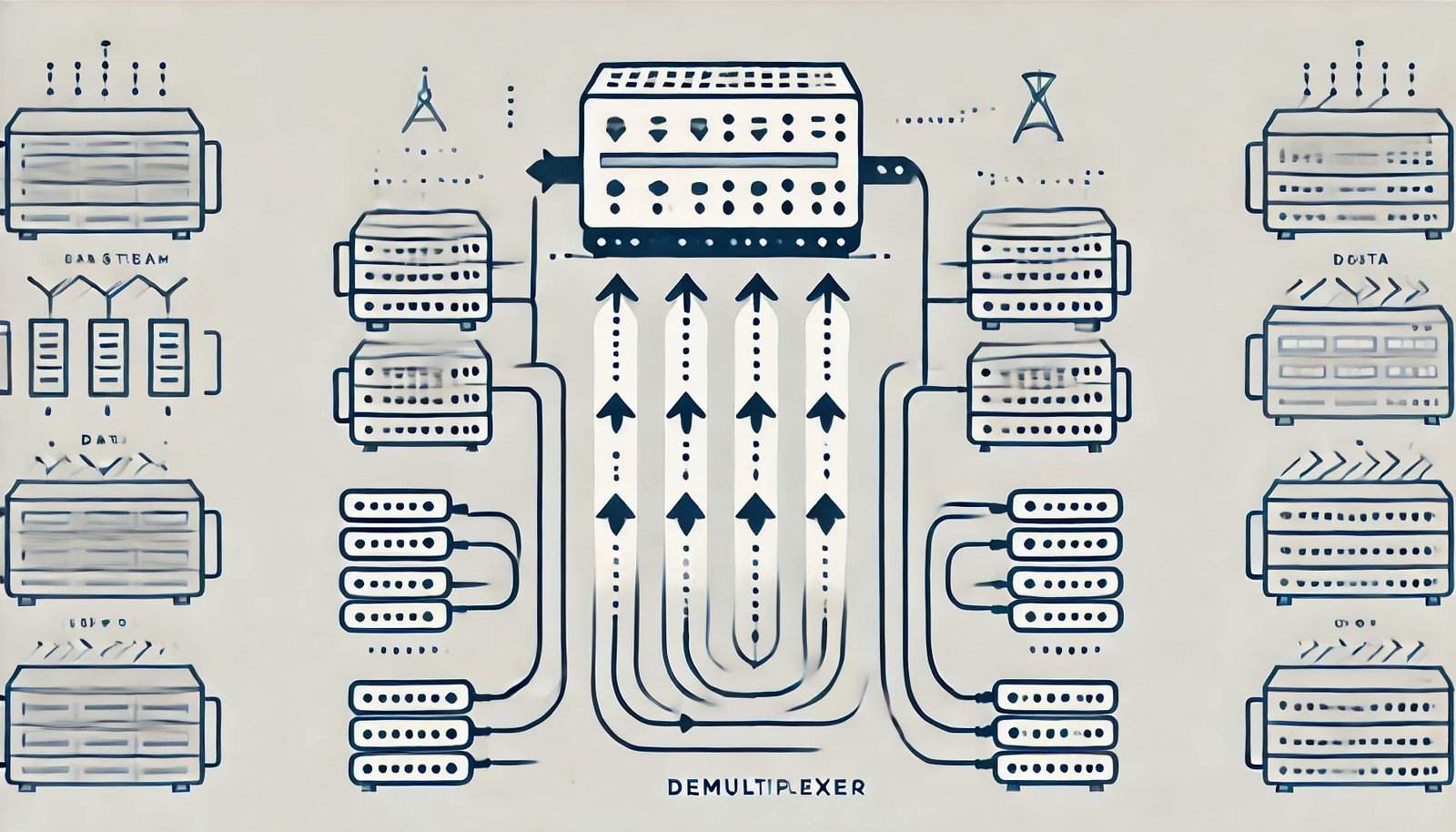Demultiplexing
 (Representational Image | Source: Dall-E)
(Representational Image | Source: Dall-E)
Quick Navigation:
- Demultiplexing Definition
- Demultiplexing Explained Easy
- Demultiplexing Origin
- Demultiplexing Etymology
- Demultiplexing Usage Trends
- Demultiplexing Usage
- Demultiplexing Examples in Context
- Demultiplexing FAQ
- Demultiplexing Related Words
Demultiplexing Definition
Demultiplexing is the process of separating multiple signals that have been combined into a single stream and distributing them into their respective channels. It is commonly used in digital communications, networking, and data transmission to ensure that different types of information reach their correct destinations. In computing, demultiplexing is crucial in protocols like TCP/IP, where incoming packets are directed to the appropriate applications.
Demultiplexing Explained Easy
Imagine you have a big box of different-colored candies, and you want to sort them by color. You take each candy, look at its color, and place it in the right pile. Demultiplexing works the same way—when a combined stream of information arrives, it is sorted and sent to where it belongs.
Demultiplexing Origin
The concept of demultiplexing arose with the development of telecommunication systems, where multiple signals needed to be transmitted over a single channel and then separated at the receiving end. The rise of digital computing further expanded its applications in networking and multimedia systems.
Demultiplexing Etymology
The word “demultiplexing” comes from the Latin prefix “de-” (meaning “reverse” or “undo”) and “multiplex” (which refers to combining multiple signals). Thus, demultiplexing means reversing the process of multiplexing.
Demultiplexing Usage Trends
With the increasing demand for high-speed data transmission and multimedia streaming, demultiplexing has become a crucial process in telecommunications, networking, and digital broadcasting. It plays a key role in internet protocols, fiber optics, and wireless communications. Advances in hardware and software have improved the efficiency of demultiplexing in real-time data processing.
Demultiplexing Usage
- Formal/Technical Tagging:
- Digital Communications
- Data Transmission
- Networking
- Signal Processing - Typical Collocations:
- "demultiplexing algorithm"
- "signal demultiplexing"
- "data stream demultiplexing"
- "demultiplexer circuit"
Demultiplexing Examples in Context
- In networking, demultiplexing helps direct incoming data packets to the correct applications based on port numbers.
- In digital television broadcasting, demultiplexing extracts audio, video, and subtitles from a single transmission.
- In optical fiber communication, demultiplexing separates different wavelengths of light carrying data signals.
Demultiplexing FAQ
- What is demultiplexing?
Demultiplexing is the process of separating combined signals or data streams and directing them to their intended destinations. - How does demultiplexing work in networking?
It ensures that incoming data packets are delivered to the correct applications using port numbers in protocols like TCP/IP. - What is the difference between multiplexing and demultiplexing?
Multiplexing combines multiple signals into one, while demultiplexing separates them back into individual signals. - Where is demultiplexing used?
It is used in networking, telecommunications, broadcasting, and optical fiber communications. - What is a demultiplexer?
A demultiplexer (DEMUX) is a device that receives a single input and routes it to one of several outputs based on a control signal. - Why is demultiplexing important in data transmission?
It ensures that data reaches the correct recipient without interference, making communication efficient and accurate. - Can demultiplexing be done in software?
Yes, software-based demultiplexing is common in networking and multimedia applications. - How does demultiplexing apply to video streaming?
It separates audio, video, and subtitle tracks from a single streaming signal for playback. - Is demultiplexing used in wireless communication?
Yes, wireless systems use demultiplexing to separate signals from different sources. - What are some common demultiplexing techniques?
Time-division demultiplexing (TDM), frequency-division demultiplexing (FDM), and wavelength-division demultiplexing (WDM) are common methods.
Demultiplexing Related Words
- Categories/Topics:
- Digital Communications
- Networking
- Telecommunications
- Signal Processing
Did you know?
Demultiplexing is crucial for satellite communication. Satellites receive signals from multiple sources and use demultiplexing to separate them before sending them back to Earth. This allows multiple users to access satellite networks without interference.
PicDictionary.com is an online dictionary in pictures. If you have questions or suggestions, please reach out to us on WhatsApp or Twitter.Authors | Arjun Vishnu | @ArjunAndVishnu

I am Vishnu. I like AI, Linux, Single Board Computers, and Cloud Computing. I create the web & video content, and I also write for popular websites.
My younger brother, Arjun handles image & video editing. Together, we run a YouTube Channel that's focused on reviewing gadgets and explaining technology.



Comments powered by CComment